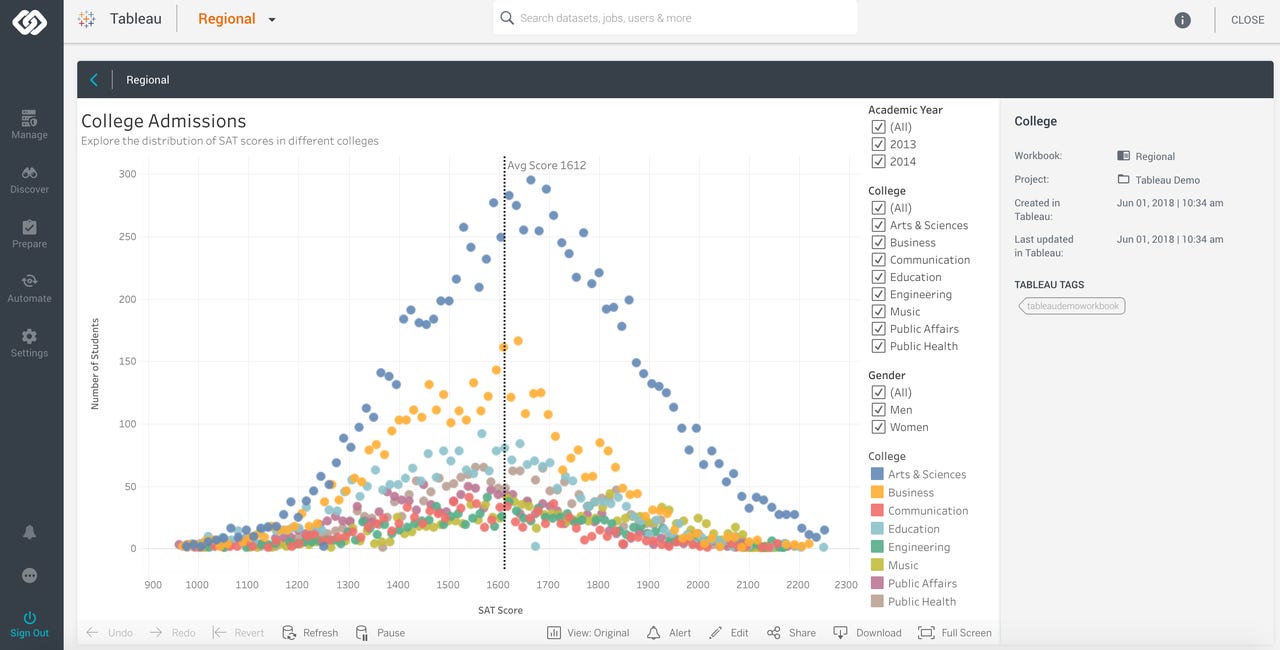Unifi adds Tableau metadata to its data catalog

Unifi Software, a self-service data tools company based in San Mateo, CA, is notable for offering data prep and data catalog functionality in a single product. With the release of version 2.9 of its Unifi Data Platform, the company has seen fit to enhance the catalog portion of the product significantly.
A Table(au)
Mahesh Gandhe, Unifi's Director of Product Development, explained to me in a telephone interview that many Tableau customers may run several instances of that company's Tableau Server product, and that cross-server views of all of a company's Tableau assets may be hard to come by. True to its name, Unifi saw an opportunity to solve this problem by offering connectivity to Tableau Server, and the ability to track Tableau Server projects, workbooks and views via the Platform's data catalog, in a cross-server fashion.

Looking at a Tableau view from Unifi Data Platform
Unifi Data Platform 2.9 offers this capability and can also embed the Tableau Server user interface as an iFrame within the Unifi UI, allowing the catalog not just to track your Tableau assets but to take you to them.
The Tableau integration surfaces under Unifi's BI Explorer feature which Gandhe explained to me could be extended to work with other BI platforms as well.
Beyond BI
The 2.9 release adds more than just the BI Explorer and Tableau integration, though. While perhaps less flashy, these features allow self-service analytics to proceed more efficiently.
- A new file crawler allows groups of files contained in the same folder to be treated as single datasets and loaded into the catalog as such. Users can take advantage of this feature by specifying a folder and a RegEx pattern to identify the files within the folder to be crawled. This feature works across local, network, Hadoop HDFS and cloud object store file systems.
- The new release also allows data stewards to designate particular datasets as trusted -- an official endorsement of sorts that allows other users to triage available datasets and pick the ones most likely to help them get their analysis work done, successfully. Unifi has added the converse feature -- deprecating a dataset -- as well.
- A new view of the 10 most recently viewed datasets is available as well, with each such dataset rendered as a rectangular tile with a preview of the initial columns and row values.
- New smart filtering capabilities, available in a right-hand-side task pane, have been added to help browse through large result sets.
Just goes to show
We know that data governance is becoming more important to lots of organizations, as data breaches and data privacy regulation each become more significant and invasive. The governance mandate clearly drives business for data catalog vendors.
But data catalogs are growing in importance beyond use as governance tools. Increasingly, data catalogs are being used as data discovery portals for self-service analytics users. This new release of the Unifi Data Platform bears this out by integrating with perhaps the best known self-service BI platform.
The catalog-as-portal phenomenon is further corroborated by the recently viewed dataset view, which functions much like a recently viewed files facility in a word processing or spreadsheet application.
This all shows that data catalog repositories may be managed and curated as a stewardship task, but are leveraged in a consumption fashion by analysts and power users who want to find the right data for their work and corresponding insights.